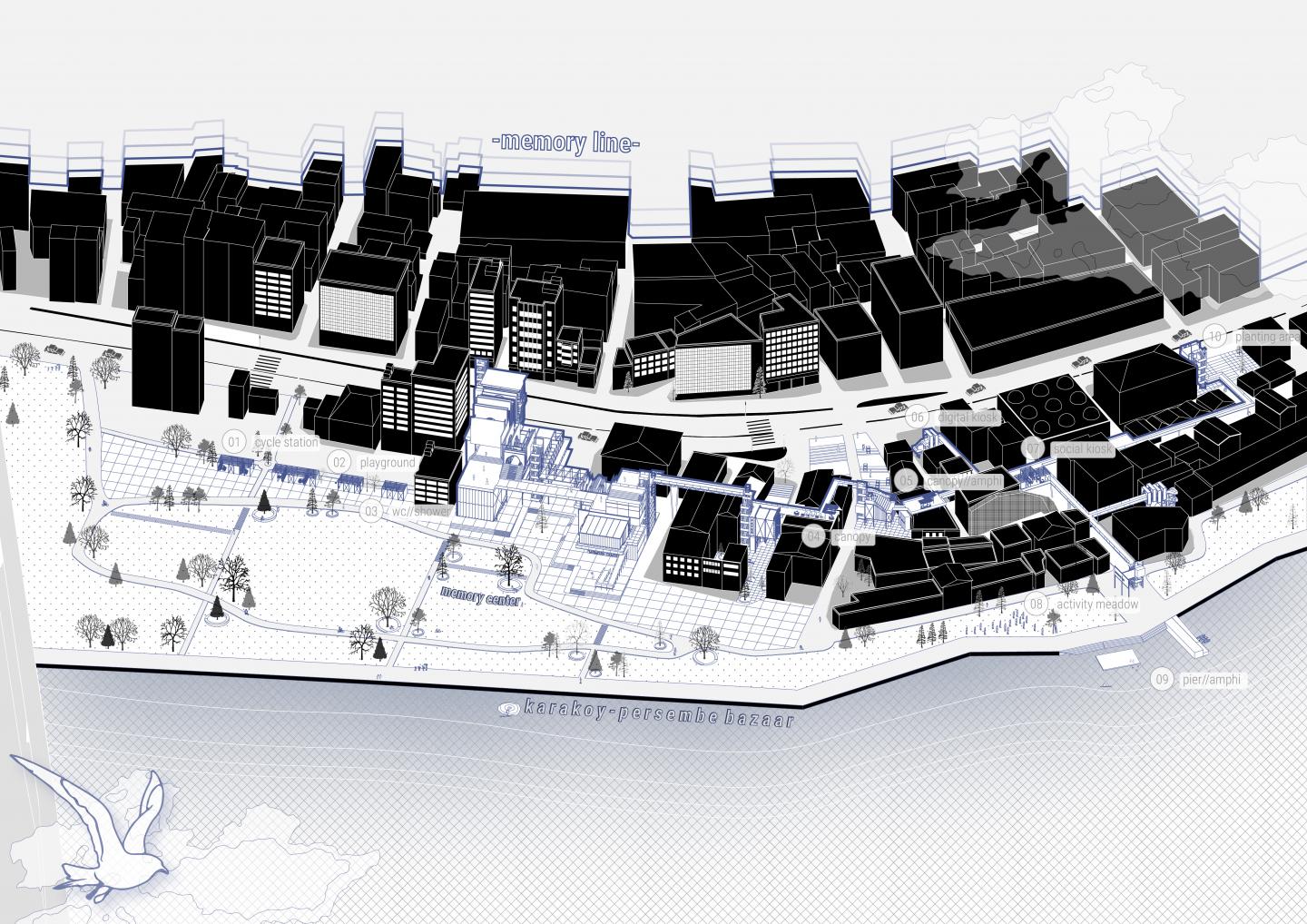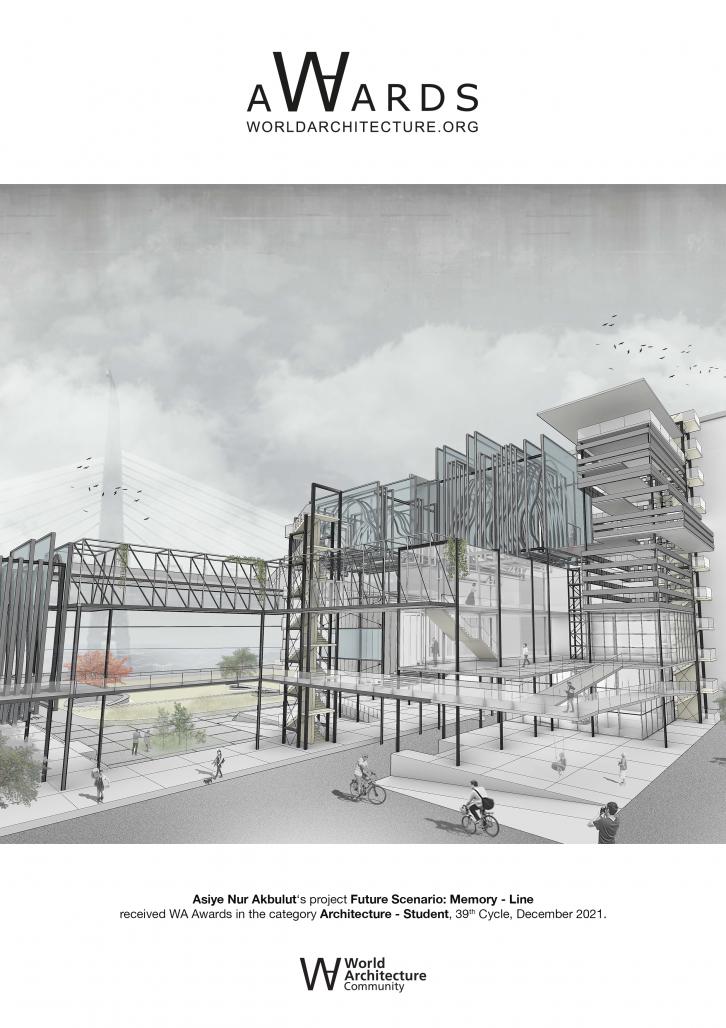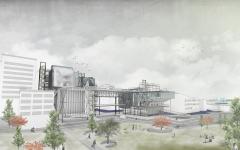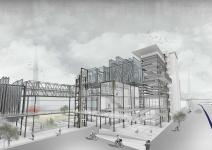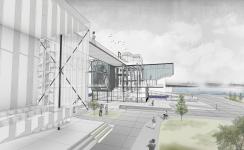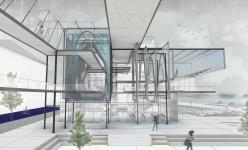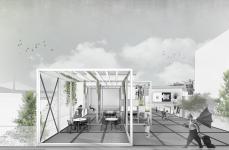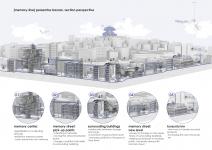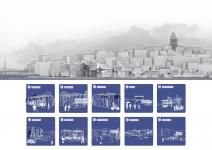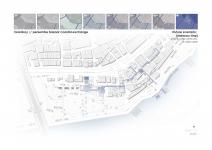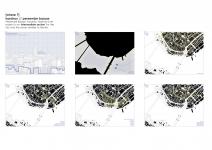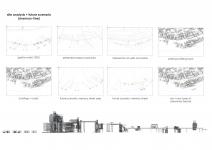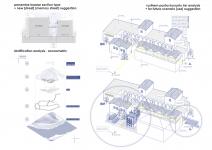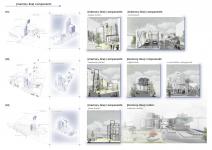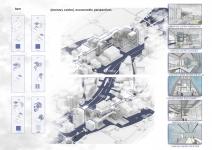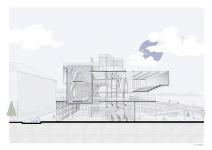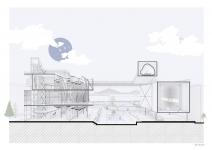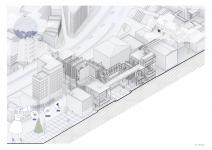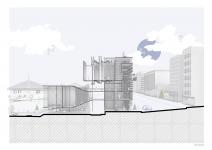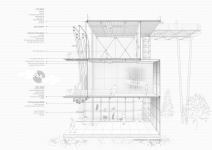Karakoy Museum Project, Memory-Line
Persembe Bazaar, Karakoy, Memory-Line project is an ‘intermediate section’ for the city and the urban dweller to the life of the Persembe Bazaar that has been going on since the Byzantine period to the present day without stopping. Karakoy, formerly known as’ Galata ' is one of the oldest settlements of the city. Persembe Bazaar, Galata and Pera are located at the bottom of the layered structure of Karakoy. The products produced and sold in the Persembe Bazaar are of great importance in terms of operation and material. The most important feature of the products here is that they can provide a useful answer to the searches. Persembe Bazaar has a fairly clearly established scheme. It is obvious in which streets hardware materials, paper products, paints are produced and sold. Thus, there are several ‘routes’ hidden behind all this confusion. These routes are accompanied by-products on display/on sale at ground floor level. Products that are not on display are located in warehouses on the upper floors of shops. As in today's museum architecture/understanding. Museums hold exhibitions held at certain times. Most of the works that are no longer exhibited in museums are removed to storage. When I look at the analysis of museum architectures, 90% of the uses are reserved for warehouses. For this reason, visitors only visit the gallery areas and leave the museum. However, behind the visible, there is a ‘memory’ full of thousands of hidden artefacts. As a result of all these experiences, I can say that the “storage” status of the Persembe Bazaar coincides with the “storage” understanding of museums, and they are the parameters of a common problem.
This project aimed that the storage spaces can also be part of the exhibition by going beyond the usual understanding of the museum and that the memory-line project will become an urban memory where the past/present/future time scenarios of the city are combined. This memory, the project proposes a scenario where the digital and physical states of the works meet, which increases the collective capacity of the users of the space by taking advantage of the dynamic and architectural identity of the Persembe Bazaar. This scenario begins with the collection of what the project calls ‘artefacts’ for the user found in the Karakoy-Beyoglu region through the designed memory app. The data collected on the app takes its place in the memory centre’s database. At the other stage, works of paper/hardware/plant types are collected at public pick-up points that users living anywhere in the world can bring, preserving the original material memory of Karakoy, Persembe Bazaar to be exhibited and stored in the Memory-Line project. The works collected at these points go on a new journey to be transferred to the relevant stations according to their type. On this trip, visitors to memory-street accompany the works. The visitor transfers the work on his way to the next work station on his route by the information he receives from the memory app. All these stations are located by the strategies established in the inert areas of the Persembe Bazaar, where artefacts can be physically positioned. The stations are connected with the help of memory street. Memory-street aims to move the wealth of the ground level of the Persembe Bazaar to the upper level. Persembe Bazaar opens its storage on the upper floors of the surrounding shops for the use of shopkeepers and visitors; it is also a proposal for a future scenario that creates new public spaces that provide circulation in the work-user relationship.
2021
This project, which is located in the middle of the Persembe Bazaar, starts with Rustem pasha inn and ends with the memory centre. Memory-center helps store this collective memory digitally on panels. Thus, each panel has a ‘specific to the stored work’ memory. Modular ‘memory panels’ specific to this place, which determine the form of the structure called the smallest unit, have become an important part of the project's induction scenario with an expressionist attitude. This structure, which is transported with a steel structure, is supported with the help of cores installed at three different points where Tershane Street is connected to the shore. Memory-line continues by adding to the structure in every part; It has made a mark in the layers of history with its innovative attitude both as a part of the Persembe Bazaar, Karakoy.
Under the supervision of:
Ilgın Avcı
Future Scenario: Memory - Line by Asiye Nur Akbulut in Turkey won the WA Award Cycle 39. Please find below the WA Award poster for this project.
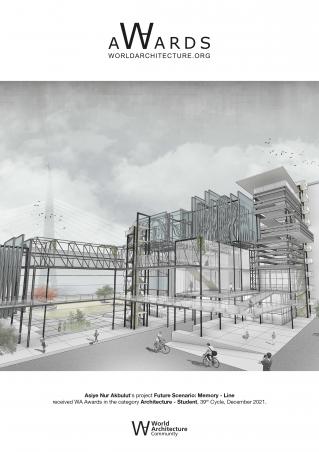
Downloaded 0 times.
Favorited 2 times
